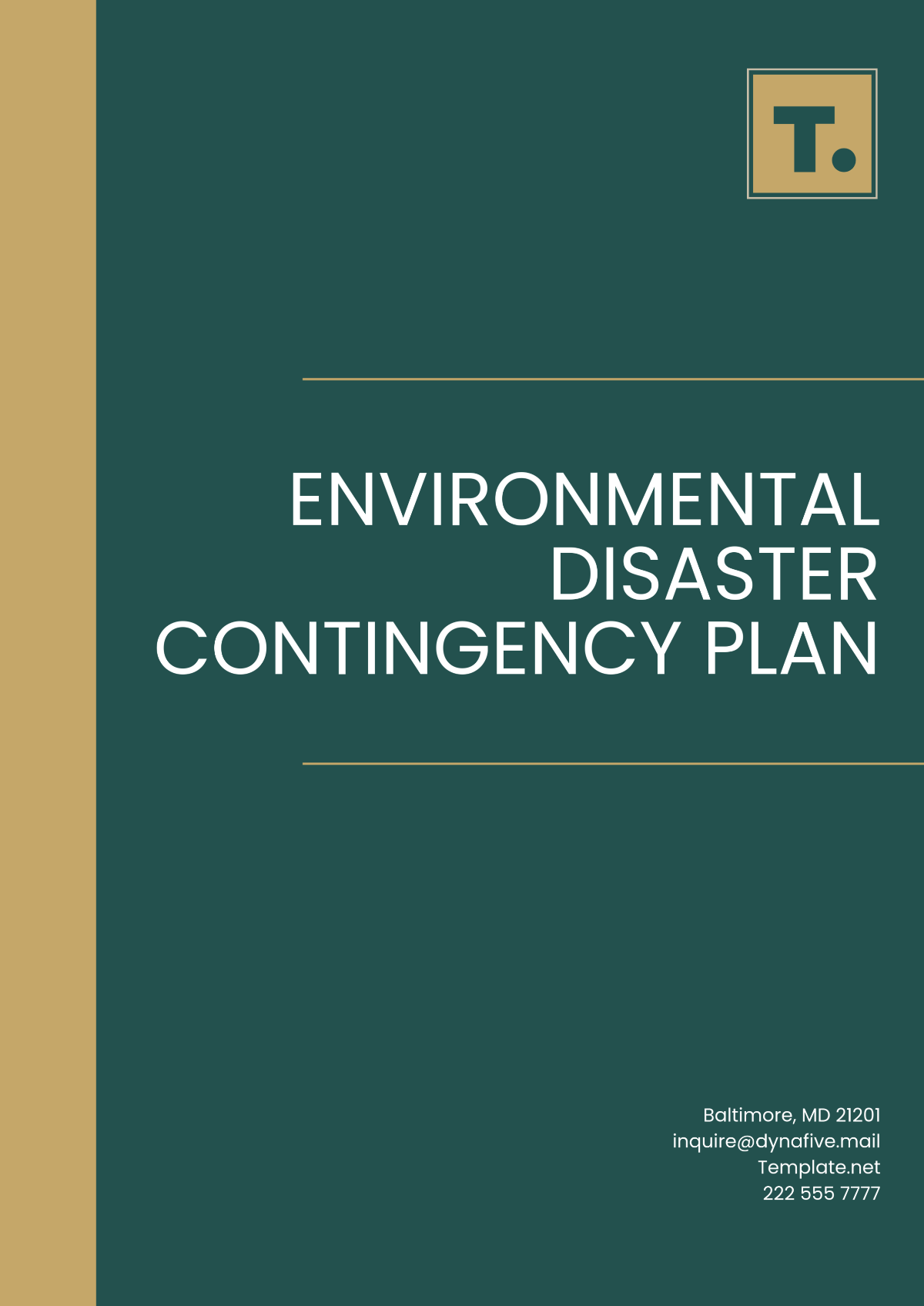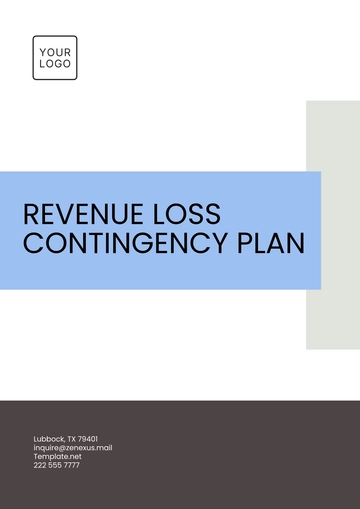Environmental Disaster Contingency Plan
Prepared By: [Your Name]
Date: March 1, 2060
I. Introduction and Purpose
The Environmental Disaster Contingency Plan aims to provide a comprehensive framework for mitigating, responding to, and recovering from potential environmental disasters. Our primary goal is to protect human life, preserve natural ecosystems, and minimize economic loss. By being proactive, we can ensure the safety and continuity of our operations and the communities we serve in 2060 and beyond.
II. Risk Assessment
This section identifies potential environmental hazards relevant to our operating areas, including:
Climate-related events such as hurricanes, floods, and droughts
Technological hazards including industrial accidents and chemical spills
Biological threats such as pandemics and invasive species
Geological events like earthquakes and landslides
Each identified risk will be evaluated based on its probability and potential impact, ensuring appropriate mitigation measures are in place.
III. Emergency Response Procedures
In the event of an environmental disaster, swift action is crucial. Our response procedures include:
Initial Assessment: Rapid appraisal of the situation to understand the scope and required response actions.
Activation of Response Teams: Deploy the specifically assigned groups with comprehensively outlined instructions for their tasks.
Immediate Mitigation: Take necessary actions and establish appropriate strategies to mitigate, reduce, or prevent any additional harm or damage from occurring.
Deployment of Resources: Ensure that all necessary equipment and personnel are appropriately allocated and dispatched to the areas that have been affected.
Monitoring and Reporting: Continuous observation and documentation of the situation to facilitate updates and strategic decisions.
IV. Roles and Responsibilities
Clear and precise assignment of tasks ensures a coordinated and effective response. The following key roles are essential:
Operations Chief: Manages tactical operations, including the deployment of resources, coordination of on-the-ground teams, and ensuring that operations are carried out efficiently and effectively.
Logistics Coordinator: Oversees the organization, procurement, and distribution of resources. This role ensures that all necessary supplies and equipment are in place and available for the teams in the field.
Communication Officer: Responsible for managing all communication efforts, both internal and external. This includes providing updates to the response teams, as well as disseminating timely, accurate information to the public, stakeholders, and the media.
V. Communication Protocols
Effective communication is critical to the success of any disaster response. This section outlines protocols for clear and organized communication:
Internal Communication: Secure, reliable communication channels are used for real-time coordination and operational updates. This includes encrypted messaging systems, radio communication, and designated communication hubs for teams in the field.
External Communication: Information must be disseminated swiftly to external audiences. This includes the use of official press releases, social media updates, website notifications, and media briefings. The Communication Officer ensures transparency and clarity in messaging, promoting public awareness while maintaining accuracy.
VI. Resource and Equipment List
A comprehensive inventory is crucial for the smooth execution of disaster response. Key resources include:
Protective Gear and First Aid Kits: High-quality personal protective equipment (PPE), including gloves, helmets, masks, and eye protection, along with comprehensive first aid kits for treating injuries.
Heavy Machinery for Debris Removal and Construction: Bulldozers, cranes, and excavators for clearing debris, rescuing trapped individuals, and assisting with reconstruction efforts.
VII. Evacuation and Safety Procedures
Prioritizing safety is vital for minimizing harm to personnel and affected communities. Procedures include:
Early Warning Systems: Automated systems to issue alerts and warnings to communities at risk. These systems include sirens, text alerts, mobile apps, and loudspeakers for immediate action.
Evacuation Routes: Clearly marked and rehearsed evacuation routes, with multiple exit points identified and regularly updated. These routes are designed to avoid areas of risk and ensure quick, safe exits.
Sheltering Protocols: Preparation of designated safe zones equipped with essential supplies, including food, water, and medical care. These shelters are stocked and ready for use at a moment's notice, providing a secure refuge for displaced individuals.
VIII. Recovery and Restoration Plan
The post-disaster recovery process is key to restoring normalcy. This includes:
Damage Assessment: A systematic and thorough evaluation of the environmental, infrastructural, and human impact, conducted by a team of experts to prioritize recovery efforts.
Cleanup Operations: Coordinated efforts for debris removal, hazardous material containment, and environmental cleanup. Specialized teams are deployed to clear hazardous areas and reduce long-term environmental impact.
Ecological Restoration: Rehabilitation of ecosystems affected by the disaster, including replanting vegetation, restoring wildlife habitats, and revitalizing local biodiversity.
IX. Training and Drills
Ongoing training ensures that all response teams are prepared to act swiftly and effectively. The training program includes:
Annual Full-Scale Simulation Exercises: Realistic, full-scale disaster simulations involving all response teams to test coordination, communication, and operational efficiency under pressure.
Monthly Skill Workshops: Hands-on workshops aimed at enhancing specific disaster response skills, such as search and rescue operations, first aid, hazardous material handling, and crisis communication.
Plan Templates @ Template.net






























